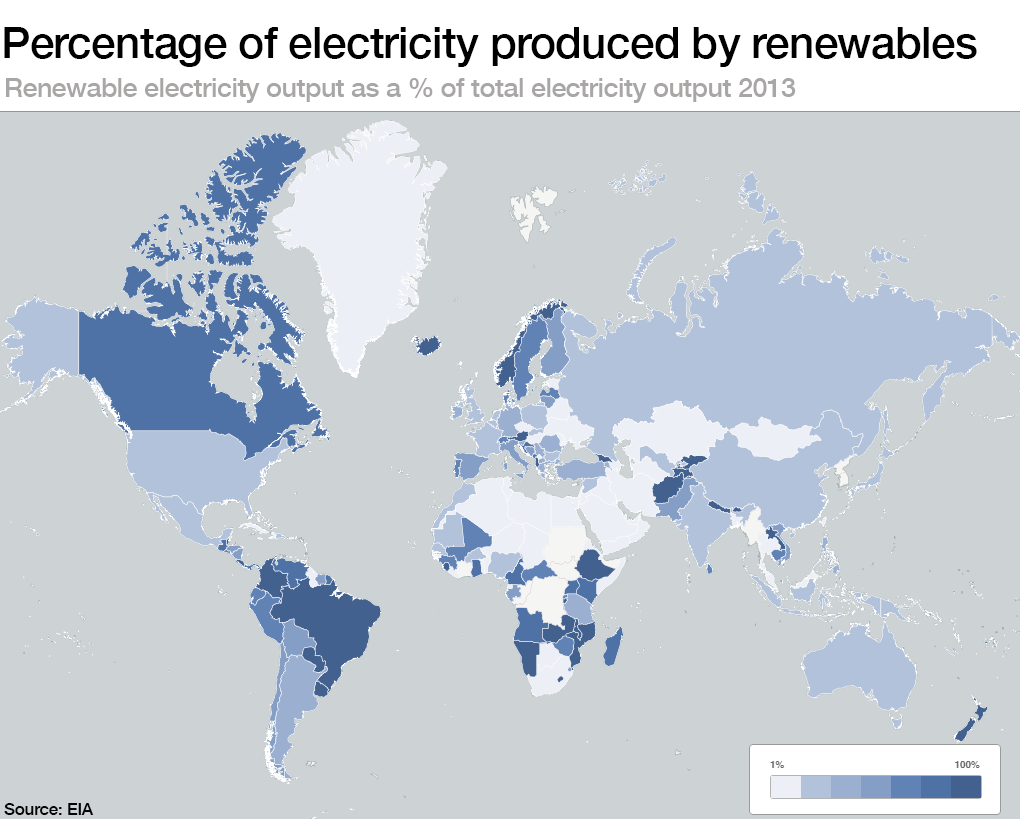As Portugal runs on renewable power, which countries are best equipped for a clean energy future?

An offshore wind farm stands in the water. Image: REUTERS/Bob Strong

Get involved with our crowdsourced digital platform to deliver impact at scale
Stay up to date:
Future of the Environment
For four consecutive days Portugal was powered entirely by renewables, a major milestone in its journey to a clean energy future.
For a 107-hour run, Portugal’s electricity consumption was fuelled entirely by renewable energy sources such as solar, wind and hydro power, an analysis of national energy network figures found.
This landmark achievement comes as April smashed temperature records, keeping 2016 on track to be the hottest year on record.
This temperature increase (1.1 degrees Celsius above average for the month) highlights the urgency of a switch to renewables – a move that many countries are embracing.
In 2013, Portugal was generating only 7.5% of its electricity from wind, but in 2015 this increased to 22%, with renewable sources providing almost half of the country’s energy for the year.
Portugal isn’t the only country stepping up its transition to clean energy. Germany has been praised for consistently increasing its use of renewable energy, which accounted for 33% of energy use in 2015.
Recently, the country’s use of renewables skyrocketed thanks to a sunny and windy day, with clean energy providing 87% of used electricity at one point during the day. This high turned power prices negative, with consumers effectively being paid to consume energy.

Many countries around the world are leading the charge towards a clean energy future. According to 2013 data from the Energy Information Administration, 16 countries have hit 100% renewable electricity production.
Many of the countries often have small populations and great natural resources. Half of these 16 countries are African, four Asian, two Latin American and two European countries.
Costa Rica recently made headlines for running on only renewable energy for 75 days of 2015.
Nordic countries are often praised for their renewable energy efforts. Iceland has achieved 100%, with Norway close behind on 98% according to 2013 data.
Denmark has also seen milestones as a leader in wind power. Although the country uses renewables for around half of its electricity, on some days it produces as much as 140% of its own needs due to the intermittent nature of the sources.
Have you read?
Don't miss any update on this topic
Create a free account and access your personalized content collection with our latest publications and analyses.
License and Republishing
World Economic Forum articles may be republished in accordance with the Creative Commons Attribution-NonCommercial-NoDerivatives 4.0 International Public License, and in accordance with our Terms of Use.
The views expressed in this article are those of the author alone and not the World Economic Forum.
Related topics:
The Agenda Weekly
A weekly update of the most important issues driving the global agenda
You can unsubscribe at any time using the link in our emails. For more details, review our privacy policy.
More on Nature and BiodiversitySee all
Dan Lambe
April 24, 2024
Roman Vakulchuk
April 24, 2024
Charlotte Kaiser
April 23, 2024
Jennifer Holmgren
April 23, 2024
Agustin Rosello, Anali Bustos, Fernando Morales de Rueda, Jennifer Hong and Paula Sarigumba
April 23, 2024
Carlos Correa
April 22, 2024






